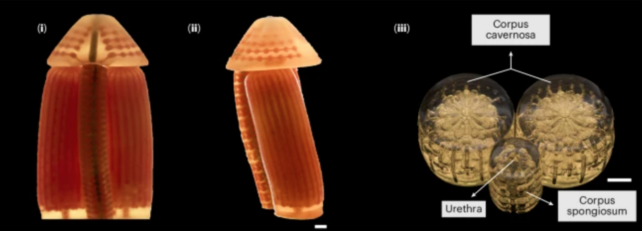
Chinese-led team uses hydrogel-based bioinks for 3D-printed implant able to replicate functional components of natural erectile tissue
A Chinese-led study has held out hope for a therapeutic solution to erectile dysfunction (ED) – using advanced biomedical 3D printing to treat the condition in animals in a world first.
ED affects more than 40 per cent of men aged 40 and above. The team of researchers used hydrogel-based bioinks to develop a 3D-printed penile implant system able to anatomically replicate all functional components of natural erectile tissue.
The animal subjects – pigs and rabbits – exhibited restored erectile capacity post-implantation, with reproductive success rates surging from 25 per cent in the control group to 100 per cent in the treatment group, the team said.
Do you have questions about the biggest topics and trends from around the world? Get the answers with SCMP Knowledge, our new platform of curated content with explainers, FAQs, analyses and infographics brought to you by our award-winning team.
Details of the landmark study were published in Nature Biomedical Engineering on March 4.
“These findings indicate that the implants markedly improved functional recovery,” wrote lead author Wang Yingjun, who is an academician at the Chinese Academy of Engineering and president of the National Engineering Research Centre for Tissue Restoration and Reconstruction at the South China University of Technology.
The penis has the most complex vascular network of all human organs. Key to its function are the two corpus cavernosa, which run through the length of the organ and are critical for erectile function, and the tunica albuginea – a tough layer of connective tissue that surrounds the corpora cavernosa and helps to sustain the erection. When blood vessels within the corpus cavernosum are engorged, it results in an erection.
The team used a hydrogel composition, made up mainly of acrylic acid gelatin, as 3D-printing bioink to reconstruct the corpora cavernosa. The engineered construct was then encapsulated within a high tensile, fibre-based, artificial tunica albuginea, ensuring structural integrity during erectile simulation.
For a more realistic simulation, the researchers also created biomimetic versions of the corpus cavernosa, the corpus spongiosum – another erectile column – and the glans penis, or head of the organ, using 3D printing. They then combined these components according to the natural anatomical structure.
To allow the printed 3D penis to grow, a layer of endothelial cells (EC) were implanted on its surface to ensure the recipient’s immune system did not attack it.
The animals in the study were divided into three groups. Some received the 3D implant while others received both the 3D and EC implants. A third control group, also with penile injury, received no treatment at all.
While the third control group still showed 25 per cent success in breeding, this soared to 75 per cent for the 3D implant group and to full breeding capacity for the double-implant cohort.
Those with EC-seeded implants exhibited enhanced tissue regeneration and were able to mate successfully, the researchers said.
Two weeks after surgery, the animals regained normal function in terms of erectile morphology. Overall, the results indicated that 3D-printed hydrogel penises could restore partially defective penises to their normal structure.
Six weeks post-implant, mating trials showed that the animals had regained erectile function. When introduced to mates, they were able to copulate and reproduce with a 100 per cent success rate.
“This study advances the clinical application of 3D-printed artificial tissue organs,” Wang wrote.
The researchers highlighted the “growing emphasis on the development of 3D in vitro functional models for dynamic organs with intricate circulatory networks”, such as the heart and lungs.
“However, most studies of these dynamic organs in vitro have not been carried out in large animal experiments to further promote their application,” the study noted, highlighting their unique findings.
This innovative approach is expected to lead to personalised treatments within regenerative medicine.
This article originally appeared on the South China Morning Post (www.scmp.com), the leading news media reporting on China and Asia.






